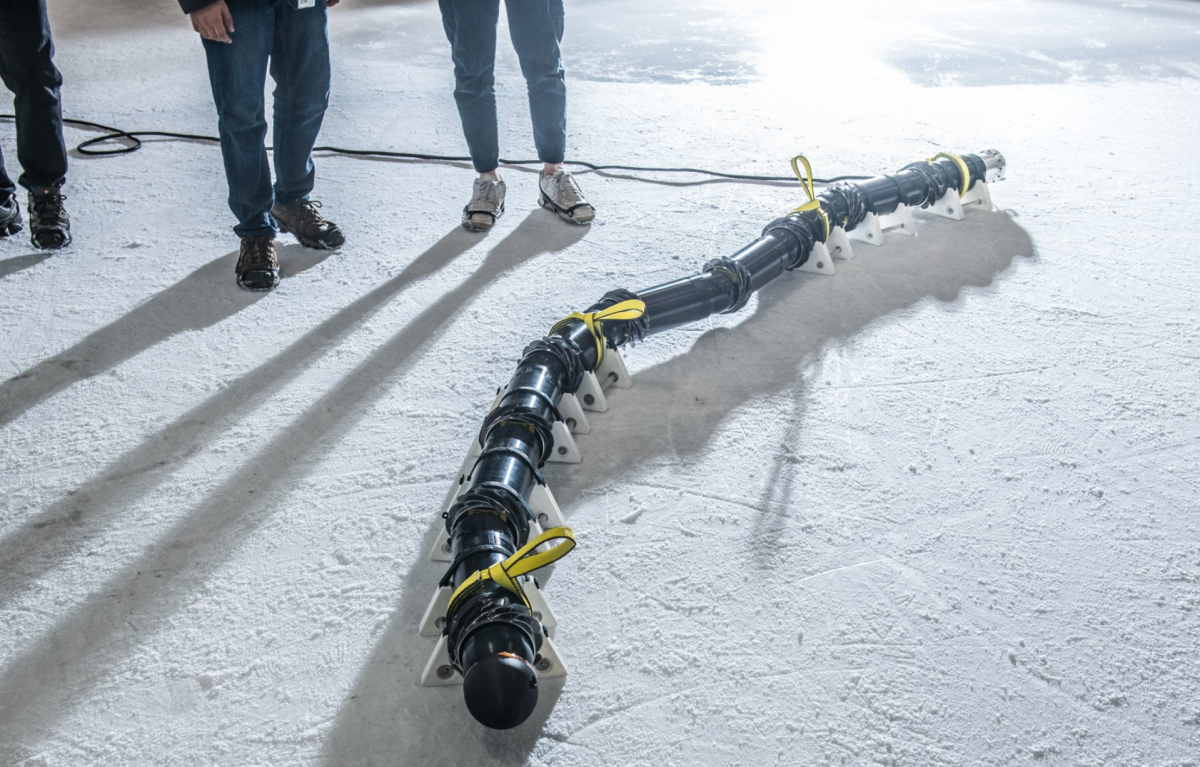In a step away from the traditional Wall-E-shaped robots that have been sent to other planets, NASA is planning to send robots resembling snakes to explore the moons of Saturn.
These serpentine robots, named EELS (Exobiology Extant Life Surveyor), are being tested by NASA's Jet Propulsion Laboratory (JPL) as a potential explorer of Saturn's icy moon Enceladus.
"It has the capability to go to locations where other robots can't go. Though some robots are better at one particular type of terrain or other, the idea for EELS is the ability to do it all," said JPL's Matthew Robinson, EELS project manager, in a statement.

"When you're going places where you don't know what you'll find, you want to send a versatile, risk-aware robot that's prepared for uncertainty—and can make decisions on its own," Robinson continued
Enceladus is the sixth-largest moon of Saturn, and is comprised of an icy crust over a freezing-cold ocean of liquid water.
Despite these seemingly inhospitable conditions, data gathered by NASA's 2005 Cassini mission found that huge amounts of water and gas spurt out of the planet's surface at immense speeds—around 800 miles per hour—sending plumes of its innards into space.
When Cassini analyzed the contents of the geyser-like ejections, it found that they contained silica nanograins, which are only present in places where liquid water and rock interact at temperatures above 90 degrees Centigrade (194 degrees Fahrenheit).
These findings show that below its frigid crust, Enceladus might be bubbling with geothermal activity. This makes the moon a prime candidate for the search for extraterrestrial life, as hydrothermal vents have proved to be a hotspot for strange forms of extreme life on Earth.

It is hoped that an EELS will be a good candidate to explore Enceladus due to its ability to navigate all kinds of terrain, including deep crevasses and underground oceans.
The 220-pound, 13-foot-long robots are also able to move around without human input, which is essential since Saturn and its moon are just under 1.5 light-hours away from Earth—a light-hour is how far light travels in one hour.
Any signal from the robot will take an hour and a half to reach Earth, with our response taking the same length of time to return.
NASA engineers have therefore designed the EELS to be able to sense its own environment using cameras and lidar—a form of laser-based sonar that builds up 3D maps of an environment—and travel according to the risks it has determined, gathering data about the moon as it goes.

"Imagine a car driving autonomously, but there are no stop signs, no traffic signals, not even any roads. The robot has to figure out what the road is and try to follow it," the project's autonomy lead, Rohan Thakker, said in the statement. "Then it needs to go down a 100-foot drop and not fall."
Testing of the EELS has been taking place at NASA for the past few years—the first prototype was built in 2019. Scientists took the burgeoning robot technology to Athabasca Glacier in the Canadian Rockies as a proxy for the environment on Enceladus' surface.
They also tested the robots in sandy environments and on an ice rink. The final form is hoped to have 48 tiny motors to allow for finely tuned maneuvering, allowing the EELS to move up rocky and icy surfaces.
Meet EELS, a snake-like robot being developed to autonomously map and explore previously inaccessible destinations on Earth, the Moon, and other worlds in our solar system.
— NASA JPL (@NASAJPL) May 8, 2023
Learn how it's being put to the test in sandy, snowy, and icy environments: https://t.co/aB0StA3XI8 pic.twitter.com/GOSERFmEQe
The scientific instruments that EELS will be equipped with have not yet been determined, however, as these strangely serpentine robots are a long way from being sent up into space.
"Our focus so far has been on autonomous capability and mobility, but eventually we'll look at what science instruments we can integrate with EELS," Robinson said. "Scientists tell us where they want to go, what they're most excited about, and we'll provide a robot that will get them there. How? Like a startup, we just have to build it."
It is hoped that EELS will be ready to fly into space by the end of 2024, however, there will still be another 12 years of space travel before it reaches Saturn and its moons, around 920 million miles away.
Do you have a tip on a science story that Newsweek should be covering? Do you have a question about NASA robots? Let us know via science@newsweek.com.
Uncommon Knowledge
Newsweek is committed to challenging conventional wisdom and finding connections in the search for common ground.
Newsweek is committed to challenging conventional wisdom and finding connections in the search for common ground.
About the writer
Jess Thomson is a Newsweek Science Reporter based in London UK. Her focus is reporting on science, technology and healthcare. ... Read more
To read how Newsweek uses AI as a newsroom tool, Click here.








